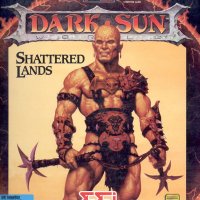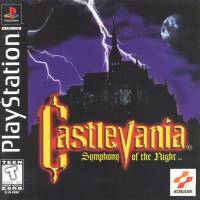Copy Link
Add to Bookmark
Report
Siege (Documentation)


BRINGING THE BALLISTA TO BEAR
Tactical Tips To Help Siegers Wage The Good War
by Jr. Engineer Chris Lombardi
Siege, by Mindcraft, is a detailed tactical simulation of
siege warfare in a fantasy setting. Despite the AI's minor
quirks, it can wage a challenging offensive and mount a
stout defense. The following article provides general
tactics gleaned from too many nights of playing, and
specific, non-documented numbers provided by Mindcraft, to
aid fellow Siege players in their campaigns in the land of
Gurtex.
Bringing People Together [NEXT]
It's an irritating fact about Siege that when two units
engage they often do not attack one another in the most
efficient manner, ie. the two lead creatures of the groups
engage while the others sit idle. This can be to your
advantage if you are outmatched and are stalling until
reinforcements arrive. But if you have the advantage, this
can be a waste of valuable time. To get more guys in the
action you will have to 'massage' the groups. One way is to
split the group between those engaged and those in the back.
Then order the new group to attack the enemy's flank. You
can also try moving the group back a few inches.
Slings and Arrows [NEXT]
Missile units are a major pain for both sides of a Siege.
On the attack, the computer's first move is almost always to
roll up its crack missile units and clear the walls. If you
are outgunned, don't try to fight arrow with arrow. Often,
the best defense is to draw your troops back out of their
range and focus catapult fire on the enemy's firing zone.
A better defensive tact is to have a crack hand-to-hand
unit stationed discretely outside of the walls. When enemy
missile units roll up, this group can sally forth and make
quick work of the poorly armored bowmen.
Heros To The Rescue [NEXT]
The most important units on the screen are your crack
troops. Heros, dreadknights, mazemasters, elementals --
basically, any group that combines a fearsome attack with a
daunting defense. Judicious and frequent use of these groups
can win the day. They should be at the spearhead of a wall
assault and at the hot-points of a castle defense, but WATCH
THEM CAREFULLY. You usually only have a few of these troops
and the loss of 2 or 3 can be a major setback. The key is to
use the Release command liberally whenever any of these
units have dropped below half strength, sending them back to
the hospital for rejuvination. Also, see notes on healers.
Engineers [NEXT]
Engineers are the key to any siege -- for both sides.
There's nothing like a few groups of catapulters with
flaming oil for those pesky, hard-to-reach missile units.
Don't discount ballistae either -- they shoot 1/3 faster
than a catapult and are a bit more accurate. Of course,
ballista bolts don't bounce and they don't explode, but they
can quietly whittle down the enemy, very quickly.
When defending a castle, keeping ladders off of your
walls can be the difference between victory and orcs in your
privy. Non-engineer units have a 5% chance every turn to
knock down a ladder if they are standing next to it.
Instant Ladder Removal [NEXT]
Engineers, on the other hand, remove ladders immediately.
It's a good idea to have a group of engineers handy, just
for this purpose. During breaks in the action, this little
demolition force can run around and clean up the walls, and
thereby keep the enemy engineers busy.
Engineers with catapults are a primary target for the
computer AI. Once breaching a wall, the enemy will often
make a bee-line for these groups. With this in mind, it may
be a good idea to have at least 5 soldiers Escort every
engineer group to protect these fragile units long enough
for reinforcements to arrive should they be attacked.
Ready, Aim, Attrition [NEXT]
You may notice that the computer opponent will set up
'staging grounds' in the country-side when on the attack --
often piling up a hundred or more units. If you have
expendible catapult units, these gathering grounds are prime
targets for boulder attack. And if the enemy's camp is close
enough, you can even attack his unit-release area next to
his main tent. In this way, 3 catapult units can inflict
severe casualties on these groups (especially with burning
oil) and keep that kill ratio up. Idle catapults can also
attack enemy bridges at major river/crevice crossings and
thereby frustrate the enemy's engineers.
The Healing Touch [NEXT]
Did you know that Purple Wizards and Zorlim heal units
they are joined with? I've found that rather than sending
these healers into the fray where their weak defense leads
to a quick death, it is best to have them hang out around
the barracks where they can join up with beat-up troops
returning from battle. This is especially useful with
important troops like Heros and other crack troops. Rather
than sending an injured Hero to the hospital for a 4-day
vacation, have him join up with a healer. Within a few hours
or less, the unit will be at full strength and ready to
rejoin the melee.
Hard Data [NEXT]
The following chart provides the attributes of all
creatures in Siege. Combined with the discussion of the
combat mechanics that follows it, player can determine which
troop to troop match-ups will yield the best results.
We recommend that you print out this section and keep it
handy for reference.
You may notice that these numbers do not match the
information provided in the game. These numbers combine the
information made available in the game (Attack and Defense
Factors) with information not avaiable to the player (Weapon
and Armor values).
Creature Attribute Table [NEXT]
Name Temper Damage Armor Attack%
Rating Rating Defense%
------------------------------------------------------------
Arachnid Warrior 4 65 30 55 10
Behemoth Warrior 3 70 45 50 0
Blue Wizard 1 195 30 70 -60
Domug Archer 2 45 5 45 -40
Domug Warrior 1 45 10 35 0
Dreadknight 4 110 137 90 30
Dwarf Axe Thrower 3 15 45 25 10
Dwarf Elite Warrior 4 75 60 50 15
[NEXT]
Dwarf Engineer 4 40 40 10 10
Dwarf Hero 4 110 102 90 30
Dwarf Sergeant 3 50 45 35 5
Dwarf Warrior 3 40 45 30 15
Elemental of Air 4 95 85 75 45
Elemental of Earth 2 125 125 75 10
Elemental of Fire 4 125 85 75 45
Elemental of Plant 2 95 85 75 10
Elemental of Water 2 95 85 75 10
Elf Archer 1 35 10 60 -35
Elf Elite Archer 2 50 25 80 -25
[NEXT]
Elf Sergeant 2 40 20 65 -30
Gnome Engineer 1 5 10 10 15
Goblin Elite Warrior 2 35 10 50 20
Goblin Engineer 1 5 10 20 10
Goblin Sergeant 1 20 15 35 15
Goblin Rock Thrower 1 5 10 10 -30
Goblin Warrior 0 15 10 30 10
Human Archer 2 20 15 30 -40
Human Berserker 3 100 55 35 -20
Human Engineer 1 10 20 20 10
Human Hero 4 110 137 90 30
[NEXT]
Human Sergeant 3 35 40 35 15
Human Spear Hurler 2 35 20 20 10
Human Warrior 2 30 35 32 10
Jerrah 1 195 30 70 -60
Minotaur Engineer 4 80 15 30 15
Minotaur Mazemaster 4 120 65 110 30
Minotaur Sergeant 4 110 40 70 15
Minotaur Warrior 4 105 25 60 15
Orc Elite Warrior 2 45 50 45 15
Orc Engineer 2 25 40 15 5
Orc Sergeant 2 25 35 30 10
[NEXT]
Orc Spear Hurler 1 35 10 15 10
Orc Warrior 1 20 25 30 5
Purple Wizard 1 195 30 70 20
Skeleton Warrior 4 65 40 50 5
Tekhir Archer 2 55 15 40 -35
Tekhir Elite Archer 3 80 30 60 -25
Tekhir Sergeant 3 70 25 40 -30
Troll Warrior 2 95 35 40 10
Zorlim 1 180 20 50 20
Notes on the Chart [NEXT]
-- The DAMAGE and PROTECT factors are a combination of the
creature's armor and weapon ratings, and the creature's
inherent fighting ability.
-- The TEMPER factor is a general rating of a creature's
courage. The higher the rating, the more deaths a group of
creatures will take before retreating.
-- Spiders and Air Elementals can climb walls.
-- In general, bow weapons have a minimum range of 5 and a
maximum range of 15-25. Spears and Throwing Axes have a
range of 1-8, Rocks 1-10.
-- All creatures have 15 hit points.
The Combat Formulae [NEXT]
When two creatures fight, a hit is determined by a random
number from 1-100. If the attacker's random number is less
than the Attack% - the Defense% then the attacker hits. For
example, if a Dwarf Warrior (30%) attacks an Orc Warrior
(5%) then the Dwarf has a (30-5) = 25% chance to hit.
Whereas the Orc's counter-attack against the Dwarf would
have a (30-15) = 15% chance of landing true.
Damage is assessed by subtracting the defender's Armor
Rating from the attacker's Damage Rating. For example, if
the Dwarf above hit the Orc, then the Orc would take
(40-25) = 15% points of damage from its 15 hit point total.
On 'Negative Damage' [NEXT]
If we turn the situation around, we find that the Orc
would do (20-45) = -25% damage. In this case, the 'negative
damage' would turn into a token 1% damage against the
dwarf's 15 hit points. Thus, any creature who hits another
is ensured of at least this 1% damage. This may not seem
like much, but note that any fractional hit points are
truncated off, so that fifteen 1% hits will kill a creature.
A completely rested player (full fatigue bar) will attack
once per animation frame. At the lowest fatigue levels (no
fatigue bar) this drops down to one attack every three
frames. Keep those troops rested!
Items Of Mass Destruction [NEXT]
Item Damage Min Range Max Range
---------------------------------------------
Battering Ram 200% 1 1
Ballista 200% 2 30
Catapult 200% 5 40
Pool of Burning Oil 50% 0 0
Wizard Attack 300% 2 20
Note: Burning Oil does 50% damage per animation frame.
Ballista shoot 1/3 faster than the catapult, are a bit more
accurate, and can damage equipment.
Good Luck [NEXT]
In the hands of a wise commander, these numbers and tips
could turn the tide in even the most unevenly matched
scenario. May your troops fare well.
We can be reached on the Computer Club bulletin boards at
EXPT40B. Please do not send us private e-mail. Thank you,
CGW.





















